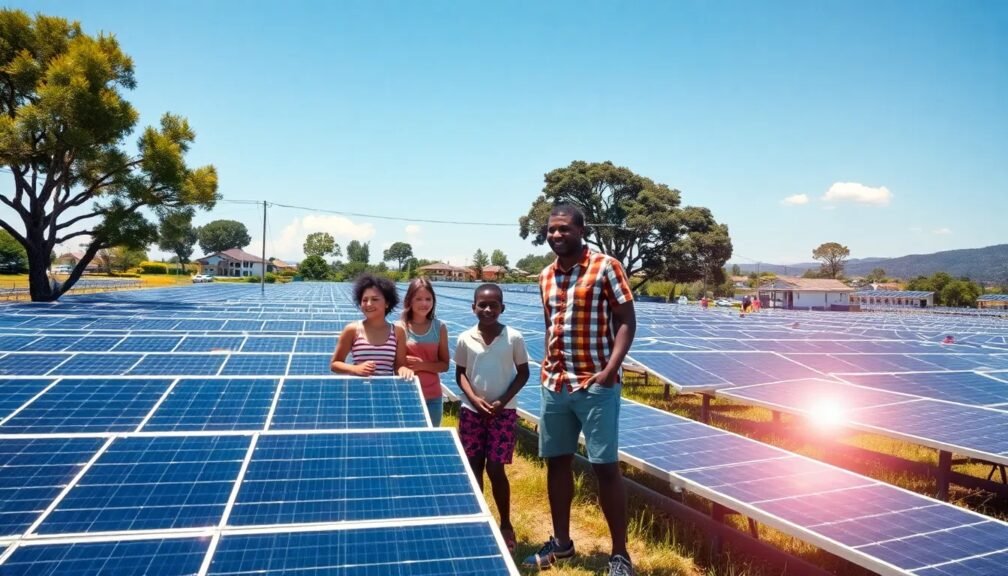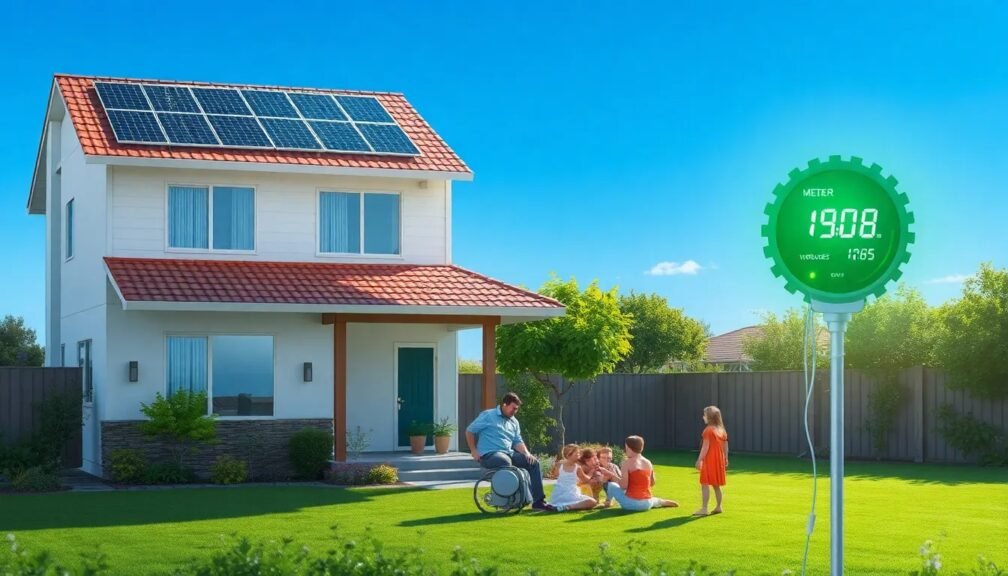In an era where renewable energy is taking center stage, community solar has emerged as a transformative solution, empowering neighborhoods and cities alike. With the collective push towards sustainability, community solar initiatives offer a pathway for individuals, businesses, and local governments to harness the sun’s power without needing rooftop installations. This article delves into the vibrant world of community solar, exploring its benefits, challenges, and potential to reshape our energy landscape.
What Is Community Solar?
Community solar is a model where multiple participants can benefit from a shared solar array. Unlike traditional solar installations that require individual ownership and on-site placement, community solar projects allow subscribers to purchase or lease a portion of the energy produced by a solar farm, often located offsite. This collaboration enables people who may not have suitable rooftops—such as renters or those with shady homes—to access clean, renewable energy.
How Community Solar Works
Community solar projects function through a straightforward concept. Here’s how it generally operates:
-
Installation of Solar Arrays: A solar developer or community organization sets up a solar farm in a suitable location.
-
Subscription Model: Residents can subscribe to the community solar project, typically through a monthly fee or a one-time investment.
-
Energy Production: The solar array generates power, which is fed into the local utility grid.
-
Credit Allocation: Subscribers receive credits on their utility bills based on the amount of electricity the solar farm produces.
By participating in a community solar initiative, individuals not only contribute to environmental sustainability but also reduce their electricity costs.
Benefits of Community Solar
1. Increased Access to Renewable Energy
One of the most significant advantages of community solar is its inclusivity. It allows anyone, regardless of their living situation or financial capacity, to take part in renewable energy solutions.
2. Cost Savings
Most community solar programs offer stable pricing, which can help subscribers save money on their utility bills. By not needing to invest in solar panels themselves, individuals can enjoy the benefits of solar energy without the upfront costs, typically associated with traditional installations.
3. Environmental Impact
Community solar plays a vital role in reducing carbon footprints. By harnessing the power of the sun, communities can significantly decrease their reliance on fossil fuels and lower greenhouse gas emissions. This collective effort contributes to a cleaner, healthier planet.
4. Local Economic Development
The construction and maintenance of community solar projects often create job opportunities in the local area, stimulating economic growth. Investing in renewable energy infrastructures helps boost the local economy while supporting local workers.
5. Resilience and Energy Independence
Community solar projects enhance energy resilience within communities. By diversifying energy sources, communities become less reliant on a single source of energy, which makes them better equipped to withstand power outages and fluctuations in energy prices.
Types of Community Solar Programs
1. Virtual Net Metering
This model allows participants to receive credits on their utility bills based on their share of the community solar output. While the energy is generated remotely, the benefits flow directly to subscribers’ electricity bills.
2. Subscription Models
Subscribers can sign up for community solar projects for a monthly fee, often with flexible commitment terms. This allows individuals to choose the project that best suits their needs and budget.
3. Shared Solar Facilities
In some cases, large organizations or residents may pool resources to create their own solar farms. This model often requires a higher level of investment but offers significant financial savings over time.
Challenges Facing Community Solar
Despite its potential, community solar is not without challenges. Here are some common hurdles:
1. Regulatory Barriers
In some regions, outdated regulations may impede the growth of community solar initiatives. Policymakers must adapt regulations to facilitate the implementation and growth of these projects.
2. Financing Difficulties
While community solar can save money, securing funding for the initial setup can be challenging. Innovative financing options or government incentives are necessary to make projects feasible and accessible.
3. Lack of Awareness
Many residents remain unaware of community solar options. Public outreach and education are crucial to spread knowledge and encourage participation in solar initiatives.
4. Partnership and Coordination
Successful community solar projects often require collaboration between various stakeholders, including local governments, utilities, and community organizations. Navigating these partnerships can be complex and time-consuming.
The Future of Community Solar
As the demand for renewable energy continues to rise, the future of community solar looks promising. Advances in technology and changes in public policy are driving the growth of community solar projects across the globe. As more communities recognize the benefits, the number of initiatives will likely increase, leading to broader adoption of solar energy.
Emerging Trends
-
Innovative Financing Models: As mentioned, financing can be a barrier, but innovative financing solutions, such as crowdfunding and community investment funds, are emerging tobridge the gap.
-
Integration with Smart Technologies: The integration of smart technologies such as smart meters and grid management systems is making community solar more efficient, allowing for real-time monitoring and optimized energy distribution.
-
Hybrid Models: Combining community solar with other renewable energy sources, such as wind or geothermal, can create a more resilient energy ecosystem, catering to diverse energy needs in varying conditions.
-
Policy Advocacy: Ongoing advocacy for supportive state and federal policies will help overcome regulatory barriers, ensuring that community solar can expand and reach more participants.
How to Get Involved with Community Solar
If you’re interested in supporting community solar initiatives or joining a program, here are actionable steps to consider:
1. Research Local Projects
Begin by researching community solar projects in your area. Websites like SolarUnitedNeighbors.org can provide insights into available programs. Local utility companies often have information about community solar initiatives they support.
2. Evaluate Your Options
Consider your energy usage and budget. Look into various community solar programs to find one that aligns with your needs, whether it’s based on a subscription model or virtual net metering.
3. Speak with Experts
Consult with renewable energy advocates or community solar developers to get a clearer understanding of how participation might benefit you and your community. They can provide valuable insights into the specific offerings and benefits of local projects.
4. Spread the Word
Talk about community solar with your friends, family, and neighbors. The more awareness there is about the benefits of community solar, the more likely others will participate, further energizing your community’s transition to renewable energy.
5. Stay Informed
Keep up with policy changes, technological advancements, and market trends in renewable energy. Being informed enables you to advocate effectively for community solar initiatives and potentially influence local policies.
Conclusion
Community solar stands as a beacon of hope in the quest for sustainable, renewable energy solutions. It not only democratizes access to solar power but also fosters community engagement and resilience. By participating in community solar initiatives, residents can significantly impact their local environment and economy, paving the way for a cleaner energy future.
As we move forward, it’s essential for individuals, organizations, and policymakers to recognize the profound benefits of community solar and work together to remove barriers to its growth. Whether you’re a participant or an advocate, your involvement can help illuminate the path to a more sustainable and environmentally friendly tomorrow.
Explore your options today, and take part in the movement that’s not just powering homes but also invigorating communities with renewable energy solutions!



